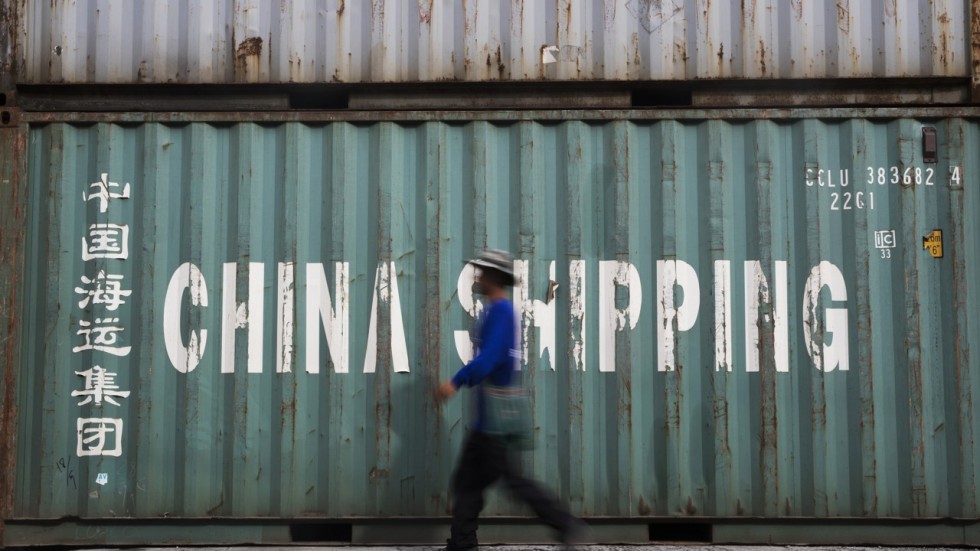China cuts tariffs on imports
June 27, 2018 | Expert Insights

China announced a long list of tariff cuts on imports from South Korea, India, Bangladesh, Laos and Sri Lanka that will take effect on July 1, amid an ongoing trade dispute with the United States.
Background
Asia Pacific Trade agreement
The Asia-Pacific Trade Agreement (APTA), previously named the Bangkok Agreement, was signed in 1975 as an initiative of ESCAP. Being the oldest preferential trade agreement among developing countries in Asia-Pacific, APTA aims to promote economic development through the adoption of mutually beneficial trade liberalization measures that will contribute to intra-regional trade expansion and provides for economic integration through coverage of merchandise goods, services, investment and trade facilitation.
Open to all developing member countries, APTA is a truly region-wide trade agreement spanning East and South Asia, with potential to expand to other sub-regions, including Central Asia and the Pacific. APTA is the first plurilateral agreement among the developing countries in the region to adopt common operational procedures for certification and verification of the origin of goods and it has the longest effective implementation period amongst the trade agreements in the entire Asia-Pacific. Notably, APTA is the only operational trade agreement linking China and India, two of the fastest growing markets in the world, and other major markets such as the Republic of Korea.
Analysis
China will cut import tariffs on goods from India and certain Asia-Pacific countries, starting from July 1, China's central cabinet announced today.
The cuts are part of China’s commitments under the Asia-Pacific Trade Agreement signed by the members of a small regional trade bloc that China joined in 2001, before its entry to the World Trade Organization. The six members agreed to the reduced tariffs in 2016 after a decade of negotiations.
Beijing’s decision to put the agreement into effect next week – five days before US President Donald Trump will impose 25 per cent tariffs on US$34 billion worth of imports from China – comes as the Chinese government tries to rally support to fight “trade protectionism”.
Under the Asia-Pacific deal, member countries including China agreed to slash import duties on more than 10,000 items by a third on average, according to official documents.
China’s cabinet decided to remove tariffs on soybeans from India, South Korea, Bangladesh, Laos and Sri Lanka that were previously 3 per cent, according to a list published by the finance ministry and customs. Soybean meal, which had been subject to 5 per cent tariffs, will also be exempted.
Tariff cuts also apply to chemicals, agricultural products, medical supplies, clothing, steel, non-ferrous metals and liquefied petroleum gas – duties on LPG will be cut from 3 to 2.1 per cent.
The Chinese government will slash most-favored-nation (MFN) tariffs for 1,449 taxable daily consumer goods starting July 1, reducing the average tariff rate from the current 15.7% down to 6.9%, according to the General Administration of China Customs (GACC).
The move is a sharp contrast to Beijing’s tit-for-tat retaliation against Washington’s punitive duties – it will slap 25 per cent tariffs on US$34 billion of American goods, from soybeans to gas, that will kick in on the same day, July 6.
India, a net exporter of soybeans, exported only 269,275 MT of soybeans last year, according to the data of US Department of Agriculture. That is equivalent to less than 1 per cent of China’s soybean imports from the US last year.
"Tariff is not an issue for us. We have to see the details of China's take on its quarantine regulations on oil meals, which needs to be sorted first. I expect there will be some changes, or it might be waived off and in that case the exports is likely to go up to 4-5 lakh tonnes, 2-3 lakh MT soymeal and 2-3 lakh tonne rapeseed meal," Mumbai-based trade body SEA executive director B V Mehta told PTI here.
Before 2012, India exported four lakh tonne of oil meals (1 lakh tonne soymeal and 3 lakh tonne rapeseed meal) to China worth about USD 100 million, he said.
In 2012, exports stopped as China had banned oil meals import from India over quarantine issue, he added. India also presents a logistic advantage as the oil meals can reach China in 5-6 days.
Other products on the list include live eels, which will be subject to 6.7 per cent tariffs instead of 10 per cent, textile raw materials, down to 6.5 per cent from 10 per cent, and hot-rolled stainless-steel plates, cut to 9.3 per cent from 10 per cent.
Counter point
The proposed tariff reductions will have less significance now as the beneficiary countries are not major trading partners with China. The free-trade deals that overlap with the Asia-Pacific agreement also make it less important as countries like South Korea and Laos already operate under the China-ASEAN free-trade pact.
Assessment
Our assessment is that the proposed tariff reduction may not contribute significantly to the trade deficit that India has with China. We believe that the focus for India would be to ask for preferential duties for higher value products such as pharmaceuticals.








Comments